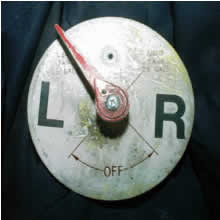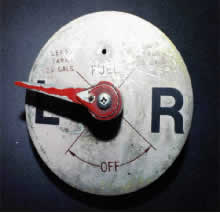Engine power loss - Collision with trees
Piper PA-28-140 C-FXUF
Russell, Manitoba
The Transportation Safety Board of Canada (TSB) investigated this occurrence for the purpose of advancing transportation safety. It is not the function of the Board to assign fault or determine civil or criminal liability. This report is not created for use in the context of legal, disciplinary or other proceedings. See Ownership and use of content. Masculine pronouns and position titles may be used to signify all genders to comply with the Canadian Transportation Accident Investigation and Safety Board Act (S.C. 1989, c. 3).
Summary
The pilot of a Piper PA-28-140 aircraft, registration C-FXUF, serial number 28-20122, departed from the aerodrome at Russell, Manitoba, at 1400 central daylight time on a visual flight rules flight to Gladstone. He took off on Runway 16. Between 100 and 200 feet above ground level, the engine, a Lycoming O-320, lost power. The pilot pushed the nose down to maintain control of the aircraft and turned to the right to avoid landing in a large swamp. The aircraft landed in a rolling cultivated field at the end of the runway and collided with trees bordering the field. Buckling of the right wing root leading edge prevented the cockpit door from opening. The pilot exited the aircraft by kicking out the left side window. The pilot, who was the sole occupant, received minor injuries to his chest and his forehead. The aircraft was substantially damaged. First responders to the accident turned the fuel selector OFF to reduce the fire hazard.
Factual information
Weather on the day of the accident was obtained from the Yorkton, Saskatchewan, Flight Service Station, 55 miles northwest of Russell, Manitoba. The sky was reported as clear with high cirrus cloud, temperature 18.7°C, dewpoint 3.7°C, and the wind was from 260° at 5 knots. Weather at Russell was substantially the same; however, the wind favoured Runway 16.
The pilot, who was the owner of the aircraft, held a valid pilot permit - recreational.Footnote 1 He flew seasonally and had accumulated about 220 hours of flight time over several years. The occurrence flight was the pilot's second flight of the year. He had accumulated approximately 1.5 hours of flight time since late fall of the previous year.
Before the flight, the pilot completed a walk-around of the aircraft and took fuel samples from all drains. The fuel samples contained no contamination. The pilot selected the left fuel tank, started the engine, and conducted a run-up in accordance with the aircraft owner's handbook; no discrepancies were found. There was no indication of the presence of carburettor icing. The electric boost pump was turned on for take-off.
The fuel tank selector has left and right ON positions at 45° up from the horizontal and two OFF positions at 45° down from the horizontal (Photo 1). Two large letters, L and R, had been glued to the selector dial face between the OFF and ON detents on each side. The date at which these letters were installed was not determined. The fuel selector allows fuel to be drawn from either the left or right fuel cell and provides a means to shut the fuel off.
Detents in the fuel selector are provided to assure complete alignment of the galleries with either the left or right fuel cell lines and to provide for fuel shut-off. If the selector is not positioned in the detents for the left or right fuel cell, misalignment of the galleries with the fuel lines results in a restriction of fuel flow. Placing the fuel selector dial over the L would result in fuel flow restriction to less than half of the normal flow (Photo 2). Placing the fuel selector dial in either the 12 o'clock or 6 o'clock position will result in the partial exposure of the right and left fuel galleries.
The pilot had always turned the selector dial straight up to shut off the fuel. On the occurrence flight, the pilot moved the fuel selector dial from the straight up position toward the large letter L (left). The pilot felt that, when he made the selection to the left tank, the detent was positive but that the engagement was different than normal. The pilot had previously experienced a complete engine power loss on the runway because he had positioned the selector beyond the detent of the right fuel cell selection.
The New Piper Aircraft Company conducted tests to establish what effect positioning the fuel selector halfway between OFF and the proper detent for the left fuel cell would have on the performance of the engine. The tests revealed that power settings at 2000 rpm for 60 seconds resulted in an engine power loss and surging. Conducting an engine run-up using lower power settings, or higher power settings (2000 rpm) for less than 30 seconds, provided enough fuel flow to sustain normal engine operation. A take-off roll and rotation normally takes less than 30 seconds.
Examination of the engine, engine fuel system, ignition system, and induction system found no pre-impact anomalies. Fuel filters and fuel lines were examined, and no water contamination was found. A fuel sample taken from the left fuel tank indicated a mixture of automotive gasoline and 100LL avgas but no indication of contamination. The right fuel tank was ruptured, so no fuel sample could be taken. Each fuel cell is of a wet-cell construction with an engine fuel pick-up line, filler neck, and vent line. Examination of the fuel vent system found that the left fuel cell vent line was obstructed. The obstruction was in the aluminum line just before the right angle fitting mounted to the left fuel cell. The left fuel cell's vented gas cap was not obstructed.
The pilot wore only a lap belt; the aircraft was not equipped with a shoulder harness. Shoulder harnesses restrain upper-body movement and contribute to reducing upper-body injuries during accidents.
Analysis
No anomalies were found with the engine itself that could have resulted in the loss of engine power. Although the left fuel vent line was obstructed, the fuel cell received adequate ventilation through the vented gas cap. The obstruction did not contribute to the loss of power.
When fuel selection was made to the left tank, the selector was most likely moved over the letter L and not engaged in the left tank detent. There was enough fuel flow to continually sustain idle power and the power settings for the run-up. When power was increased during the take-off roll, the required fuel flow was only available for a limited time. The reduced fuel flow was enough for the aircraft to become airborne; however, with the continued high-power setting, the engine required more fuel than the restricted selector would allow. As a result, the engine lost power.
Because the aircraft was not equipped with a shoulder harness, the pilot's upper body was allowed to move forward during the forced landing, resulting in injuries to his chest and forehead.
Findings
Findings as to causes and contributing factors
- The fuel selector was most likely set to the L and not in the detent, resulting in fuel flow less than that required to sustain high engine power.
- The engine lost power after take-off because of fuel starvation.
Findings as to risk
- The position of the letters L and R on the fuel selector dial face did not represent accurate left or right fuel tank selections.
- The aircraft was not equipped with shoulder harnesses. The use of a shoulder harness would probably have reduced the pilot's injuries during the forced landing.
Other findings
- The left fuel vent line was obstructed, but the obstruction did not contribute to the engine power loss.
This report concludes the Transportation Safety Board's investigation into this occurrence. Consequently, the Board authorized the release of this report on .

